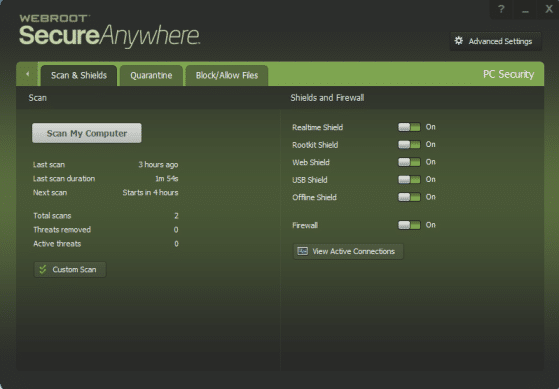

- #Webroot antivirus scam how to
- #Webroot antivirus scam update
- #Webroot antivirus scam full
#Webroot antivirus scam update
Update any 3 rd party plugins (Java/Adobe Reader/Flash player).
 Use a modern secure browser like Firefox or Chrome. Keep Windows updates turned on and set them to automatically update. The first step is simply being aware that these scams exist! Also, make sure to: There are a number of ways to ensure your PC is protected from these types of scams.
Use a modern secure browser like Firefox or Chrome. Keep Windows updates turned on and set them to automatically update. The first step is simply being aware that these scams exist! Also, make sure to: There are a number of ways to ensure your PC is protected from these types of scams. #Webroot antivirus scam how to
HKLMSOFTWAREMicrosoftSecurity Center AntiVirusOverride 00000001 How to protect yourself from these scams HKLMSOFTWAREMicrosoftSecurity Center AntiVirusDisableNotify 00000001 Hklmsoftwareclientsstartmenuinternetiexplore.exeshellopencommand Hkcrw1shellopencommand”C:UsersUserAppDataLocalgpt.exe The second shows the security center notifications that are disabled. The first shows how it modifies the open shell command so when you open any file it will run the Fake AV. Fake AV will then prompt the user to pay to remove the detected “infections”Ĭ:usersownerappdatalocalmicrosoftwindowstemporary internet filescontent.ie5wckxi56gsecurity_cleaner.exeĭetection rate of the file 28/46 Vendors on Virus Total.īelow is an example of some of the changes.Flags any opened program as an infection (by modifying the open shell reg key).Creates a number of files in the windows recycler folder (usually Zero Access).
#Webroot antivirus scam full
Disables Windows Firewall or modifies the settings to allow the file full access to the PC. Drops a randomly named file in the current users folder (Fake AV payload). However, it follows the same pattern of dropping a fake AV that stops you from opening most programs. The info below is only a guideline as the payload can change. Do not open executable files unless you are 100% sure they are good. The same goes for emails (even from friends). If a website asks you to run a file that you haven’t asked for, be extremely cautious. With scams like this, the most important way to stop getting infected is to be diligent when you’re online. Using a browser that has a pop-up blocker will reduce the likelihood of encountering a bad advertising link. I have seen examples of this type of fake webpage being linked from advertising links. Noting the website that displayed the message is good idea as you can notify the webmaster (if it’s a legitimate website). This file is the infection and, if ran, will infect the PC and start displaying pop-ups (like the one in Figure 2).Īt this stage, the PC is not infected so it’s safe to close the browser and ignore any alerts from the website. The websites’ primary function is to get you to run a “removal tool” called “security cleaner”. These websites will normally only stay active for 24-48hrs before they are pulled down. The first is that it’s a website message and not a program the second is that location of the web site will be a random string of letters. There are a number of ways to figure out that this is a false alert. The current scam will display a webpage that is very similar to the one in Figure 1. If in doubt, shut down your PC and call Webroot. Do not give any credit card info to somebody claiming to be from Microsoft. Never allow strangers to connect to your PC. Microsoft will never call you telling you that your PC is infected. With these types of scams there are a number of things to remember: Recently we have seen an increase in fake Microsoft security scams, which function by tricking people into thinking that their PC is infected.






 0 kommentar(er)
0 kommentar(er)
